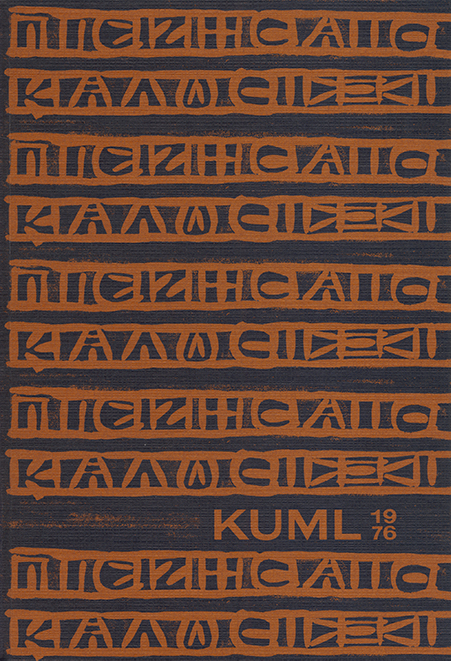An Iron Age village with sunken houses
DOI:
https://doi.org/10.7146/kuml.v25i25.106626Keywords:
Iron age, sunken house, Overbygård, vendsysselAbstract
An Iron Age village with sunken houses
The Overbygaard village was discovered during aerial photography carried out by Professor J. K. St. Joseph, Cambridge, at the end of the '60s. Excavations have been in progress since 1973.
The aerial photographs show 10-14 houses, and to date 6 sites within an area of about 3500 sq. m. have been investigated; the entire village is thought to cover an area of about 8000 sq. m.
The village is situated on a sandy Litorina island at Stae in western Vendsyssel about a mile from the Limfjord. The soil around the village is loam and on almost all sides the hill on which it is situated is surrounded by lower areas suitable for grazing, so the site must have been extremely well suited to an Iron Age community.
5 of the 6 investigated house sites show a peculiar form of dwelling, in that they are on average sunk ¾ m. into the sub-soil, which allows the development of the houses and village to be followed over the 100-200 years of their existence. Three of the houses are furnished with small annexes, connected to the long-houses by common entrances.
Three building phases may be discerned; the two lowest are the most distinct, while the latest phase has been almost totally effaced by modern deep ploughing.
In the oldest phase (phase 1) the houses are 16-17 m. long and about 5 m. wide, while in the following phase (phase 2) they increase to a length of 20-22 m. and become ½ m. wider, an extension which may manifest a change of living. The village plan in phases 1 and 2 is the same, but with the advent of phase 3 the picture changes, use being made of the old holes in addition to the construction of entirely new houses. Deep ploughing makes an accurate registration of these latest houses difficult, but 9 phase 3 houses have been demonstrated against 5 assigned to phases 1 and 2.
The smaller annexes to houses ND, NE and BP are associated only with phases 1 and 2.
With respect to construction and plan the houses here correspond to other Iron Age houses: they are three-aisled with the dwelling at the western end, while in several instances, stall separations have been demonstrated at the eastern end. The purpose of the annexes is on the other hand unknown; clay floors and fireplaces found in them suggest workshops.
A special feature in all the long-houses of phase 1 is the presence of an up to 1.5 m. deep hole just outside the entrance in the southern side; the hole has been covered with planks but its function is uncertain.
With respect to forms of livelihood the necessary analyses have not yet been completed, but barley, false flax and flax have been demonstrated, while the animal bones show that oxen, sheep, pigs and horses were present. Mussels from the Limfjord have also been found in several of the houses. But so far the finds of organic material are few from phases 1 and 2, since the houses have not been burnt, as is the case in phase 3.
Most of the find material naturally consists of pottery, which derives especially from phase 3 with the burnt houses. This is mainly utility ware with a small representation of so-called fine pottery. It should be remarked, however, that a few sherds have been found with stamped patterns, which is characteristic of Vendsyssel pottery in the early Roman Iron Age. Further, the many thickened rims and Xshaped lugs show that the village as a whole should be assigned to the early Roman Iron Age.
Among the other artefacts there is reason to mention the relatively many iron objects, found in a phase 3 context. They consist of slags, blanks and finished objects; among the latter are 2-3 knives, a 32 cm long sickle, a couple of awls, small rings, and possible parts of a bridle.
Preliminary investigations suggest that some of the iron may be "home-made" and deposits of sandy bog iron have also been found a few hundred m. east of the village area.
Jørgen Lund
Downloads
Published
How to Cite
Issue
Section
License
Fra og med årgang 2022 er artikler udgivet i Kuml med en licens fra Creative Commons (CC BY-NC-SA 4.0).
Alle tidligere årgange af tidsskriftet er ikke udgivet med en licens fra Creative Commons.


